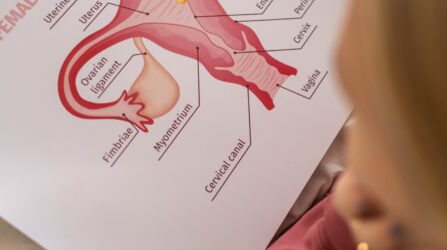
New to holistic health? Here at Selfish Darling were are taking you through our basic guide to holistic health; what it is and how to incorporate it into your life. If you haven’t read our first piece, introducing you to holistic health, read that here! It’s not all herbal tea and yoga, so if you’re new to the approach, we’re here to help guide you.
As we first introduced there, holistic health can be broken up into five distinct areas aspects or spheres. The approach believes that when we have a good balance of all five of these aspects, we will be at our optimal health. The five aspects include:
Today, we’re taking a look into the emotional aspect of holistic health. Our emotions are greatly tied to all the other aspects, influencing our mental wellbeing, social relationship, physical health and spiritual connections. But how can we look at our emotional health from a holistic health point of view?
Recently, we’ve all started to become more in tune with our emotional health as much as with our physical; in fact, the two are very closely linked and when our emotional health suffers, we often experience it through physical symptoms.
Taking care of our emotions is a priority for ensuring our overall health, and there are several ways we can do this.
– a mental state achieved by focusing one’s awareness on the present moment, while calmly acknowledging and accepting one’s feelings, thoughts, and bodily sensations, used as a therapeutic technique.
You’ve probably heard of mindfulness before, and there are multiple techniques to practising it, which means there’s something for everyone. Whether it’s art, mediation or other stress-reducing activities that help us focus on ourselves, on the moment and keeps our minds and bodies peaceful.
Seeking out therapy helps us to address our emotions and our past, learn how to deal with the past, cope for the future and teach us how best to communicate and support our emotional needs. From dealing with mental illnesses, self-esteem, trauma or simply working to grow and develop our emotional skills and boundaries, therapy can be a valuable tool for all of us.
We are not islands, and out connections with other people hugely affect how we feel both emotionally and overall. Developing healthy, communicative and loving relationships with family and friends not only makes us feel good but ensures we have a supportive network to help when times get difficult.
Emotional intelligence is what helps us to accept and express our emotional needs. According to David Goleman, this is made up of self-awareness, empathy, motivation, social skills and self-regulation. Knowing what we need emotionally and being able to request and express it to the important people our lives provides a solid base for emotional health.
There are several; ways to look after your emotional health from holistic or traditional practices. From aromatherapy, hypnotherapy, mediation, yoga, energy work, tea or even taking a long bath. Our emotions can be influenced by touch, by certain foods and lifestyle choices, so eating well, sleeping well and loving well are all integral elements for ensuring that we look after our emotional well-being.
When our emotions are at ease, the rest of our health follows. Relaxed bodies and untroubled minds

-


Dr Singh is the Medical Director of the Indiana Sleep Center. His research and clinical practice focuses on the myriad of sleep.

The importance of the follicular phase While it may not be the most fun part of the menstrual cycle, the follicular phase plays a key role in your reproductive health. As we mentioned, the follicular phase begins on the first

Understanding female hormones If you’ve never heard that women have specific feminine hormone levels, you’re probably wondering, “What are the female hormones and how many hormones do women have? Female hormones are hormones released in higher concentrations in a woman’s

Understanding estrogen and its role in pregnancy Estrogen is one of the most important sex hormones, impacting every part of the fertility process. During your menstrual cycle, estrogen levels influence LH production, which triggers ovulation. While progesterone is responsible for
Hormona© 2025, All Rights Reserved
Privacy Overview
| Cookie | Duration | Description |
|---|---|---|
| cookielawinfo-checkbox-analytics | 11 months | This cookie is set by GDPR Cookie Consent plugin. The cookie is used to store the user consent for the cookies in the category "Analytics". |
| cookielawinfo-checkbox-functional | 11 months | The cookie is set by GDPR cookie consent to record the user consent for the cookies in the category "Functional". |
| cookielawinfo-checkbox-necessary | 11 months | This cookie is set by GDPR Cookie Consent plugin. The cookies is used to store the user consent for the cookies in the category "Necessary". |
| cookielawinfo-checkbox-others | 11 months | This cookie is set by GDPR Cookie Consent plugin. The cookie is used to store the user consent for the cookies in the category "Other. |
| cookielawinfo-checkbox-performance | 11 months | This cookie is set by GDPR Cookie Consent plugin. The cookie is used to store the user consent for the cookies in the category "Performance". |
| viewed_cookie_policy | 11 months | The cookie is set by the GDPR Cookie Consent plugin and is used to store whether or not user has consented to the use of cookies. It does not store any personal data. |
